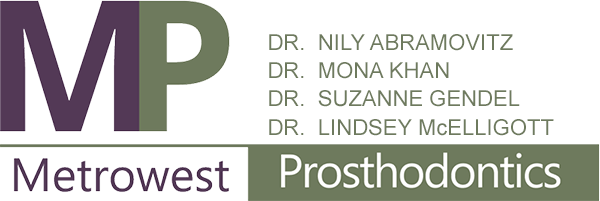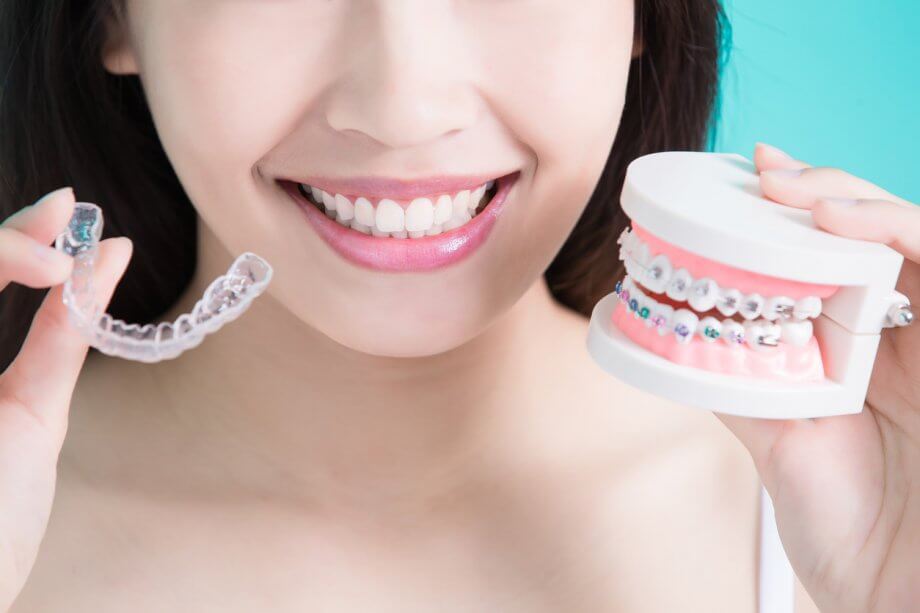How fortunate we are today to have multiple options for teeth alignment and bite correction, but this does mean that you will decide between treatments. Traditional braces have been used throughout the 20th century and are still popular today. Since 1997, though, many people have turned to a new option, known as Invisalign.
Many patients have chosen to treat their orthodontic needs with Invisalign, while many patients still choose traditional braces. The cost is basically comparable, so how can you decide which option is right for you? Consider the pros and cons of each, and consult with your dentist or specialist for advice.
Pros of Invisalign:
- Appearance. Invisalign is virtually invisible, so most people won’t even notice that you have your aligners in.
- Removable. When it’s time to eat, simply remove your aligners and eat as you normally would. There are no food restrictions and no brackets for food to get stuck in.
- Brush and floss normally. Another advantage to removable retainers is that you can brush and floss your teeth as normal. No special brushing or flossing techniques are required.
- Fewer visits to the orthodontist. With Invisalign, all of the aligners you will need are created at the start of treatment. Simply change them at home per your orthodontist’s instructions, and visit us occasionally for progress checks. You can miss less work or school.
- Brush and floss normally. Another advantage to removable retainers is that you can brush and floss your teeth as normal. No special brushing or flossing techniques are required.
- More comfortable. While the aligners will move your teeth, which may result in some minor pain, the general comfort of Invisalign aligners is greater than that of braces. You will experience less gum and mouth soreness than you would with traditional braces.
- Brush and floss normally. Another advantage to removable retainers is that you can brush and floss your teeth as normal. No special brushing or flossing techniques are required.
Cons of Invisalign:
- Requires discipline. In order for Invisalign to be effective, you must wear your aligners for 20 to 22 hours each day, only removing them to eat and brush. If you regularly forget to put them back in, your treatment will take longer or may not work at all.
- Not effective for all patients. In severe cases that call for highly complex orthodontic treatment, Invisalign may not be suitable.
- May require attachments. In some cases the Invisalign retainers require attachments to help them stay in place on a patient’s teeth. These button-like attachments are similar in color to your teeth, but may show slightly like clear or ceramic braces would.
- Not effective for all patients. In severe cases that call for highly complex orthodontic treatment, Invisalign may not be suitable.
Pros of Traditional Braces:
- Suitable for most needs. Most orthodontic cases, those that are severe and require extensive correction, can be treated with traditional braces. If further intervention is required, such as oral surgery, braces can still be a helpful part of the treatment process.
- Different types of braces are available. Some alternative types of braces have been designed to alleviate concerns about their appearance. Ceramic braces are clear or enamel-colored to be less noticeable, while traditional metal braces are available in fun fashion colors. Some braces can even align the teeth from behind.
- Easy compliance. Since the braces cannot be removed by the patient it makes it easier to comply.
- Different types of braces are available. Some alternative types of braces have been designed to alleviate concerns about their appearance. Ceramic braces are clear or enamel-colored to be less noticeable, while traditional metal braces are available in fun fashion colors. Some braces can even align the teeth from behind.
Cons of Traditional Braces
- Appearance. Not many people like the look of braces. Although they’ve become a sort of prerequisite for teenagers, it’s not necessarily something anyone wants to wear, including adults. Even clear or ceramic braces are somewhat noticeable.
- Food restrictions. Certain foods, such as hard candy, apples, and popcorn, can cause damage to braces. Soda and other dye-containing beverages can cause discoloration of the teeth around the braces, leading to uneven white spots on the teeth after removal..
- Dental hygiene is more of a challenge. Brushing is much more important while wearing braces, and even a change in technique may be necessary to keep them clean. Flossing requires the patient to thread the floss underneath their braces wires for each tooth, which can be tedious.
- Frequent adjustment appointments. Traditional braces do require more frequent appointments for adjustments. Each adjustment often results in a day or two of soreness.
- You must visit an orthodontist. Only certified orthodontists can treat you with traditional braces. You’ll need to find a practicing orthodontist and make an appointment. Your dentist can often give you some recommendations or a referral.
Choosing the Right Option for You or Your Child
If you’re going on sheer numbers, there are more advantages and less disadvantages for Invisalign when compared to traditional braces. However, it is always best to discuss your options with your dentist. If your dentist believes your teeth can be corrected using Invisalign, he or she may recommend that option. But if the necessary correction will require more in-depth treatment, it may be suggested that you see an orthodontist for traditional braces.
Make an Appointment with Metrowest Prosthodontics
Metrowest Prosthodontics is a full service dentist’s office serving Framingham, MA and the entire Metrowest region. With two general dentists, one prosthodontist, one endodontist, and three dental hygienists on staff, all of your dental needs can be met in one convenient location, including Invisalign treatment. Call today to schedule an appointment: (508) 620-6622 or request an appointment.

